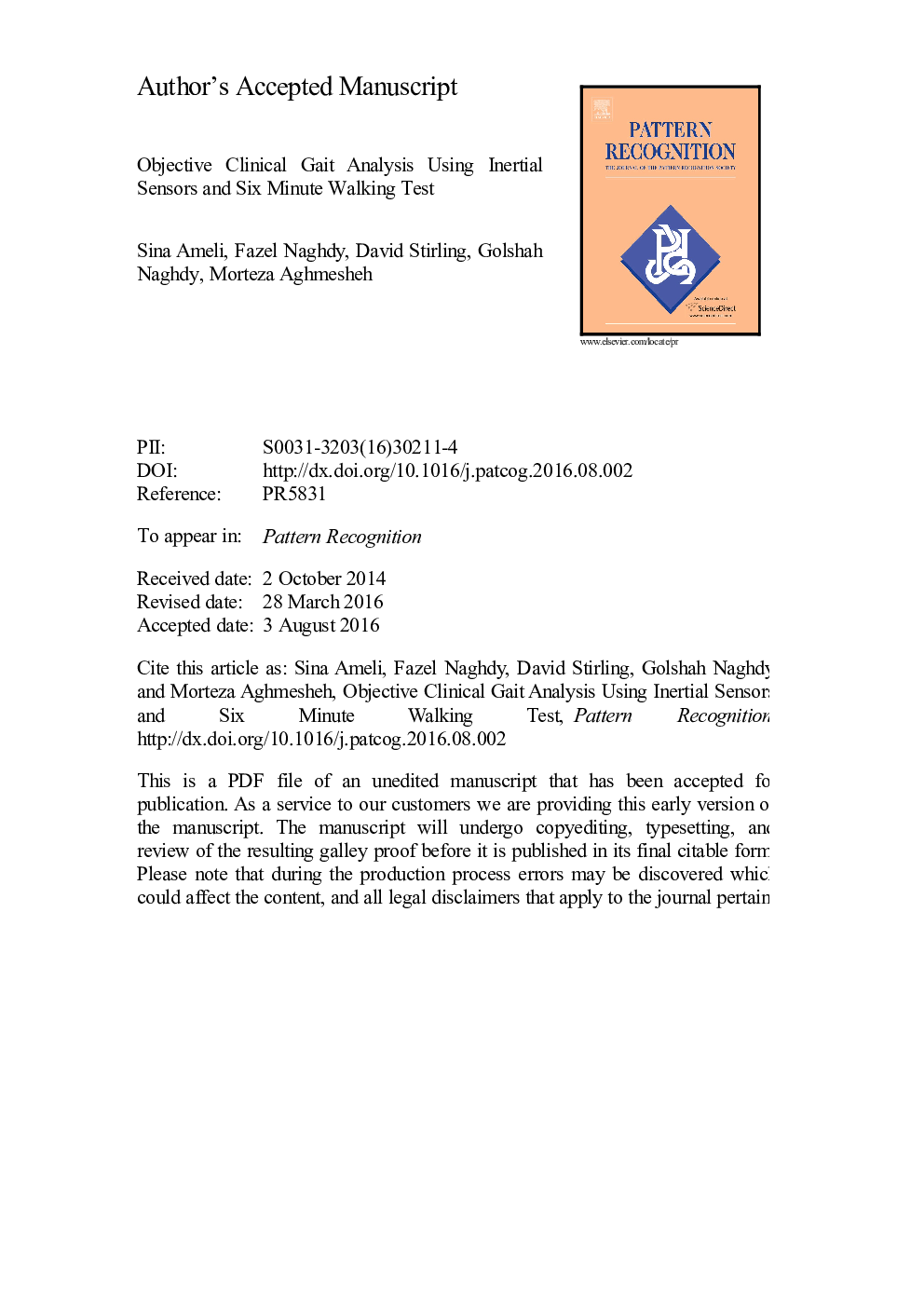| Article ID | Journal | Published Year | Pages | File Type |
|---|---|---|---|---|
| 4969823 | Pattern Recognition | 2017 | 36 Pages |
Abstract
The most common side-effect of chemotherapy is fatigue. Because of its impact on Physical Performance Status (PPS), the degree of fatigue is a factor considered in chemotherapy administration. Conventionally, a questionnaire-based method known as the ECOG table, devised by the Eastern Cooperation Oncology Group (ECOG), is employed to assess the chemotherapy-induced fatigue. The approach is qualitative, subjective, inaccurate and prone to error. To achieve a more reliable method, an objective, quantitative and precise method is proposed to assess the PPS of different groups of cancer patients. The approach was developed based on a six-minute walk test (6MWT) during which the kinematic data of 23 body segments were measured using body-mounted inertial sensors. The data streams were subsequently segmented by a clustering algorithm known as 'minimum-message-length-encoding' (MML) producing a Gaussian mixture model (GMM). Several postural states were captured from the model to derive a holistic index representing the PPS of a patient undergoing chemotherapy. The proposed method was validated by applying it to simulated and real data. For the simulation study, a typical gait behaviour simulating post-chemotherapy conditions was devised in consultation with an oncologist while the real data comprised the gait information obtained from 4 cancer patients. The results indicate that the proposed algorithm clearly identifies the characteristics of ambulatory motion affected by chemotherapy and provides a more accurate measure of fatigue that can assist oncologists to make a more objective decision regarding continuation or termination of treatment.
Related Topics
Physical Sciences and Engineering
Computer Science
Computer Vision and Pattern Recognition
Authors
Sina Ameli, Fazel Naghdy, David Stirling, Golshah Naghdy, Morteza Aghmesheh,
